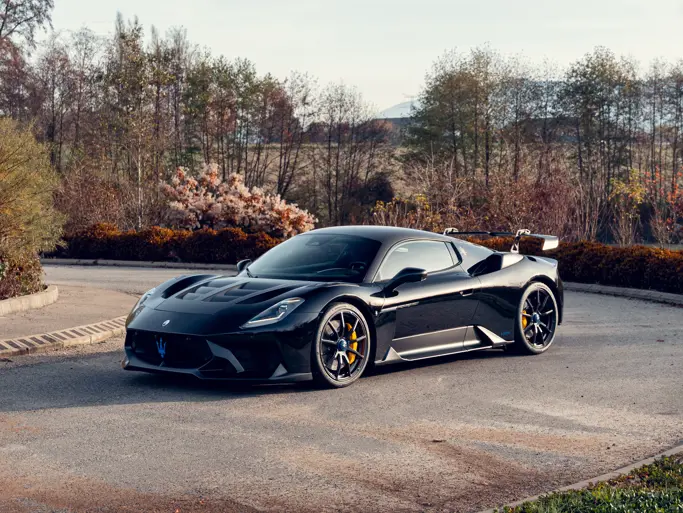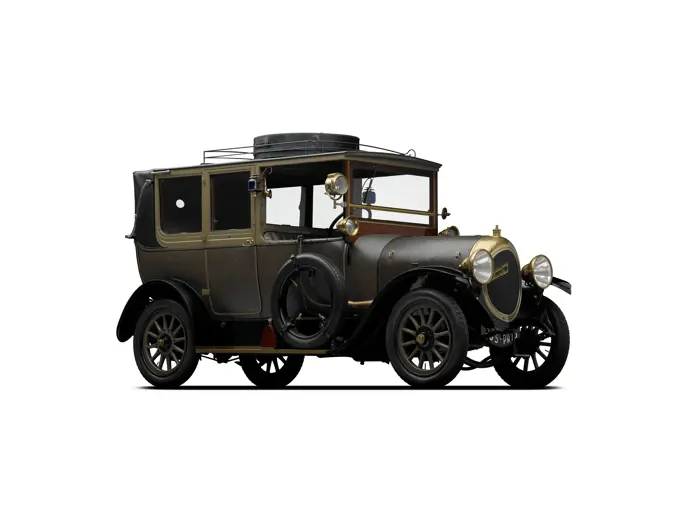 | Santa Monica, California
| Santa Monica, California
When 1904 came around, Henry Ford had been experimenting with motorized transportation, building most of the early models, such as the quadricycle, in a shed behind his house. By 1903, and for most of 1904, Ford produced the Model A. Later that year the A evolved into the Model C which was mechanically similar. Both models were advertised simultaneously along with the new four-cylinder Model B. For the 1906 year, both the Model B and C were manufactured and then in February, joined by the 16-hp, two-cylinder Model F.
The handsome Ford Model C Touring offered here is powered by a two-cylinder, ten horsepower horizontally-opposed engine. The two-speed transmission, which uses friction bands, is connected by chain to the rear axle. The exterior is finished in red with black fenders, all highlighted by yellow pinstriping along with wood spoke wheels. On the outside of the car, there is a single brass headlamp, two cowl-mounted lamps and a rear-mounted lamp - all in carriage-style. The interior has black button-tufted front and rear seats. As old as this car is, it still has factory options that include a touring tonneau attachment complete with a rear seat and a tonneau top. Both of these features would have equaled $130 addtioinal cost; a substantial investment in the early 1900s. The car is decorated with vintage Horseless Carriage Club stickers and flags. Also included is said to be an early set of original Ford wrenches, spare parts, fabricated windscreen and a correct-to-period driving suit.
This Ford Model C belonged to a collector from Arizona that had a passion for early American classic cars. Due to poor health and his eventual passing, all of his cars were stored away for many years. A recent discovery of these cars has revealed that they were stored in both dry and enclosed storage, away from the elements, leaving this Ford with great structural integrity. According to Chris Kidd, owner at Tired Iron Works in Monrovia, California, this body is said to be original and solid, along with the original wood and chassis. This car is said to have been restored, but a timeline as to when that took place is not immediately known.
The Ford does show its age since last restoration. Tired Iron Works recently got the car to start and run, but the next owner is advised to go through the entire mechanical systems before driven on the road again. The rest of the car will need to be attended to or left in a “preserved” state. This car has many attributes that make it worthy to own, from early involvement in a well-respected car club, to great historical significance and a great example of the early American Automobile.





